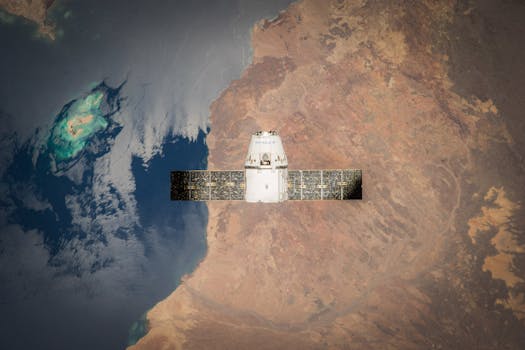High-Tech Horizons: The Evolution of Earth-Orbiting Technologies for Observation – WordPress
The evolution of earth-orbiting technologies has revolutionized the field of observation, enabling us to monitor and understand our planet like never before. From the early days of satellite imaging to the current era of high-resolution observations, the advancements in this field have been remarkable.

High-Tech Horizons: The Evolution of Earth-Orbiting Technologies for Observation – WordPress
High-Tech Horizons: The Evolution of Earth-Orbiting Technologies for Observation has been a game-changer in the field of observation, enabling us to monitor and understand our planet like never before. The evolution of earth-orbiting technologies has been a long and winding road, filled with innovations and advancements that have transformed the way we observe and interact with our planet.
Introduction to Earth-Orbiting Technologies
The first earth-orbiting satellite, Sputnik, was launched in 1957, marking the beginning of a new era in space exploration. Since then, the technology has evolved significantly, with the development of more sophisticated satellites, instrumentation, and data analysis techniques. Today, earth-orbiting technologies are used for a wide range of applications, including weather forecasting, climate monitoring, natural resource management, and disaster response.
Advancements in Observation Technologies
The advancements in observation technologies have been remarkable, with the development of high-resolution imaging sensors, radar and lidar systems, and hyperspectral instruments. These technologies have enabled us to observe the Earth’s surface and atmosphere in unprecedented detail, providing valuable insights into the planet’s dynamics and processes. For example, the Landsat 8 satellite, launched in 2013, has been used to monitor land use and land cover changes, track deforestation and urbanization, and assess the health of crops and forests.
Applications of Earth-Orbiting Technologies
The applications of earth-orbiting technologies are diverse and widespread, with significant impacts on various fields, including environmental monitoring, natural resource management, and disaster response. For instance, the use of satellite imagery has revolutionized the field of weather forecasting, enabling meteorologists to predict weather patterns and storms with greater accuracy. Similarly, the use of earth-orbiting technologies has improved our understanding of the Earth’s climate system, enabling scientists to monitor climate change and its impacts on the planet.
Conclusion
In conclusion, High-Tech Horizons: The Evolution of Earth-Orbiting Technologies for Observation has been a remarkable journey, marked by significant advancements and innovations. As we continue to push the boundaries of what is possible with earth-orbiting technologies, we can expect to see even more exciting developments in the future, enabling us to better understand and manage our planet’s resources, monitor and respond to natural disasters, and mitigate the impacts of climate change.



